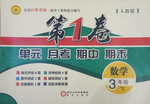题目内容
A powerful earthquake struck the northeastern coast of Japan at two forty-six p.m. local time on March eleventh.2011. Japan's Meteorological Agency released its first tsunami(海啸) warnings just three minutes later. The country has one of the best earthquake early warning systems in the world.
There are more than four thousand Seismic Intensity Meters in place throughout Japan to measure earthquake activity. These meters provide information within two minutes of an earthquake happening. Information about the strength and the center of the earthquake can be learned within three minutes.
There are also concrete(混凝土) sea walls around much of the Japanese coastline. But these measures proved no match for the powerful earthquake and tsunami.
Costas Synolakis ,a tsunami expert at the University of Southern California in Los Angeles said,"Japan is one of those most well-prepared countries on earth in terms of tsunami warning. They had a warning. I think what went wrong is that they had not expected the size of this event."
He says there are two reasons for this. Japan has not had any event anywhere near as big as this one in the last one hundred fifty years. And scientists had not expected such a large earthquake happening off the coast of Japan.
The nine point zero magnitude earthquake was the fourth most powerful earthquake ever recorded worldwide. It was also the worst earthquake ever to hit Japan. The tsunami waves that followed were reported to have reached as high as thirteen meters in some areas.
Costas Synolakis says Japan's concrete sea walls were not built to handle such high waves.
Experts say early warning systems will continue to be limited by these facts until earthquakes and tsunamis can be predicted
1.Where can this passage probably be adapted from?
A.A magazine on science B.A fairy Tale
C.A scientific fantasy book D.A newspaper
2.Which of the following statements NOT true ?
A.A terrible earthquake hit the northeastern coast of Japan
B.It was also the worst earthquake in Japan
C.The 9.0 earthquake was the fourth most powerful earthquake ever recorded in Japan
D.Japan's concrete sea walls was unable to handle such high waves.
3.According to Costas Synolakis, why did Japan suffer such a loss?
A.The country has never experienced any event as big as this one over the past 150 years
B.Japan has the best earthquake early warning systems in the world.
C.There are not concrete sea walls around all of the Japanese coastline
D.The government didn’t announce its first tsunami warnings three minutes earlier.
1.D
2.C
3.A
【解析】
试题分析:本文介绍了日本出现的地震引起的海啸对日本产生的巨大破坏以及日本对于地震的预防等方面的信息。
1.D 推理题。本文属于新闻报道类短文阅读,介绍了日本出现的地震引起的海啸对日本产生的巨大破坏以及日本对于地震的预防等方面的信息,故最可能是来自报纸。故D正确。
2.C 细节题。根据文章是倒数第三段1,2行The nine point zero magnitude earthquake was the fourth most powerful earthquake ever recorded worldwide.可知9.0级地震是全世界范围里第四大的地震,而不是日本。故C项说法是错误的。
3.A 细节题。根据文章倒数第四段1,2行Japan has not had any event anywhere near as big as this one in the last one hundred fifty years.说明破坏性如此之大是因为日本人没有预料到有如此严重的地震会袭击日本。故A正确。
考点:考查新闻报告类短文阅读
点评:本文属于新闻报道类短文阅读,介绍了日本出现的地震引起的海啸对日本产生的巨大破坏以及日本对于地震的预防等方面的信息。本文细节题居多,答题时在文章找到对应的地方,用笔进行标记,这有利于后期有时间检查时可以立刻找到答案的位置。仔细理解作者所讲的意思,再结合选项,通过排除法和自己对全文的把握,选出正确答案。

 第1卷单元月考期中期末系列答案
第1卷单元月考期中期末系列答案
Disease, poverty, hate, love-Charles Dickens’ stories opened his readers eyes to the most important themes of his age. Two hundred years on, his stories still speak volumes across the world, proving that Dickens’ legacy(遗产) was far greater that just “great-literature”.
February 7 marks the 200th anniversary of the writer’s birthday. To mark this date, BBC writer Alex Hudson listed six things Dickens gave the modern world. Let’s take a look at two of them.
A White Christmas
Dickens is described as “the man who invented Christmas” - not the religious festival, but the cultural aspects that we associate with the festive season today.
In the early 19th century, Christmas was barely worth mentioning, according to critic and writer Leigh Hunt. The committee which ran the Conservative Party even held ordinary business meetings on Christmas Day-unthinkable in the West nowadays, when everyone but the most necessary workers takes at least three days off.
Many people believe that Dickens’ popular descriptions of the festive period became a blueprint for generations to come. In his classic novel, A Christmas Carol, he not only put forward the idea of snow at Christmas, but also painted a picture of glowing warmth-“home enjoyments, affections and hopes”.
In his biography of Dickens, Peter Ackroyd wrote: “Dickens can be said to have almost single-handedly created the modern idea of Christmas.”
“Dickens” poverty
Dickens was one of the first to take an honest look at the underclass and the poor of Victorian London.
He helped popularize the term “red tape” to describe situations where people in power use needless amounts of bureaucracy(官僚作风) in a way that particularly hurts the weaker and poorer members of society.
“Dickensian” has now become a powerful word for describing an unacceptable level of poverty. In 2009, when the president of the Association of Teachers and Lecturers in the UK wanted to talk about poverty in some areas of Britain, she did not use words like “terrible” or “horrific”, but rather described it as “life mirroring the times of Dickens”.
【小题1】The article is mainly about .
| A.a brief introduction to Charles Dickens’ |
| B.Charles Dickens’ impact on the world |
| C.the characters in Charles Dickens’ stories |
| D.Charles Dickens’ achievements in literature |
| A.Because he created both religious and culture festival. |
| B.Because his novels have something to do with Christmas. |
| C.Because one of his novels helped to shape Christmas celebrations. |
| D.Because he was the first man to have proposed celebrating Christmas. |
| A.Charles Dickens’ novels reflect the true life at his age |
| B.Dickensian is widely used to describe the Christmas |
| C.Every person can take three days off for Christmas |
| D.The theme of Charles Dickens’ stories is about poverty |
| A.regulations that are required to finish a task |
| B.a situation where poor members of society are hurt |
| C.conflict between people in power and weaker people |
| D.agreements made by the underclass of society |
 Training
helped him defeat his disease. D. He overcame the shadow of illness
to win.
Training
helped him defeat his disease. D. He overcame the shadow of illness
to win.